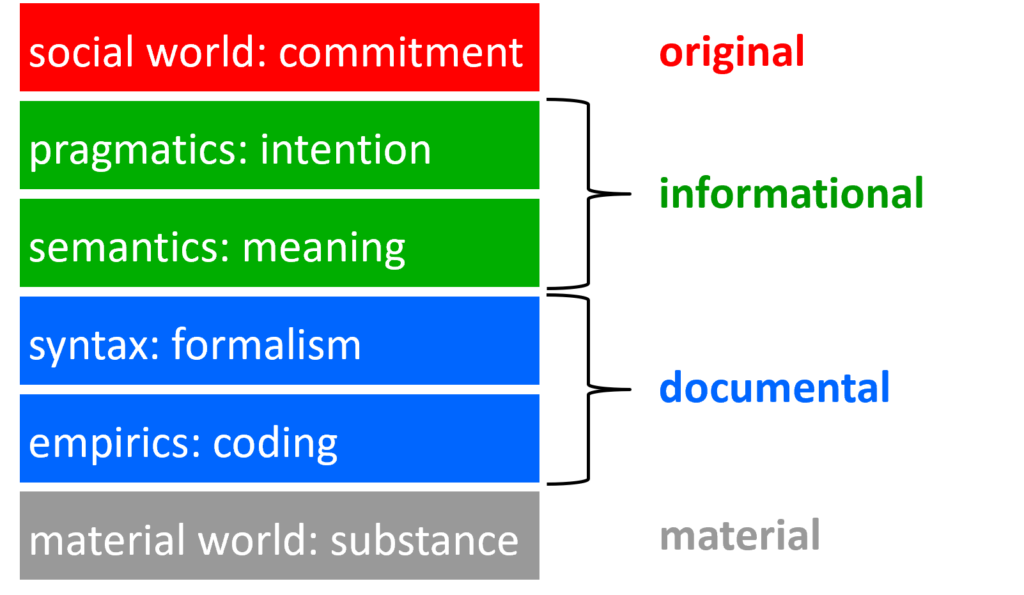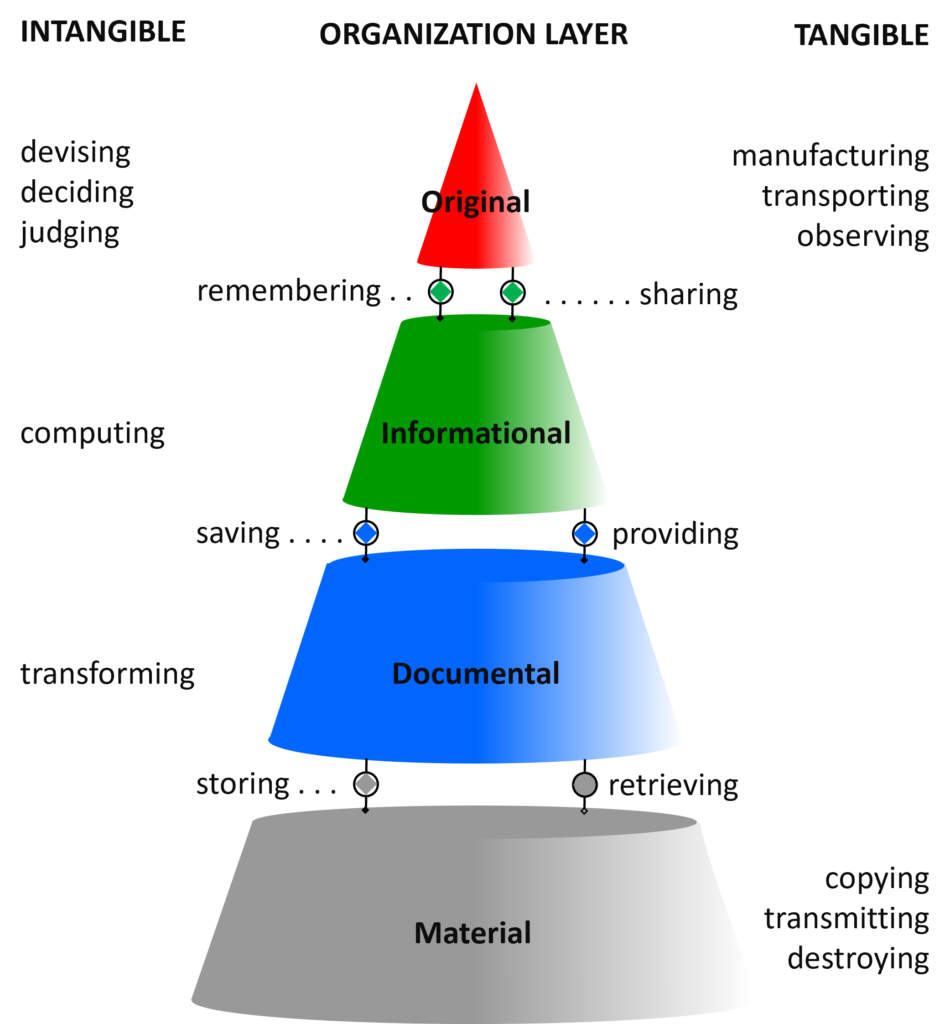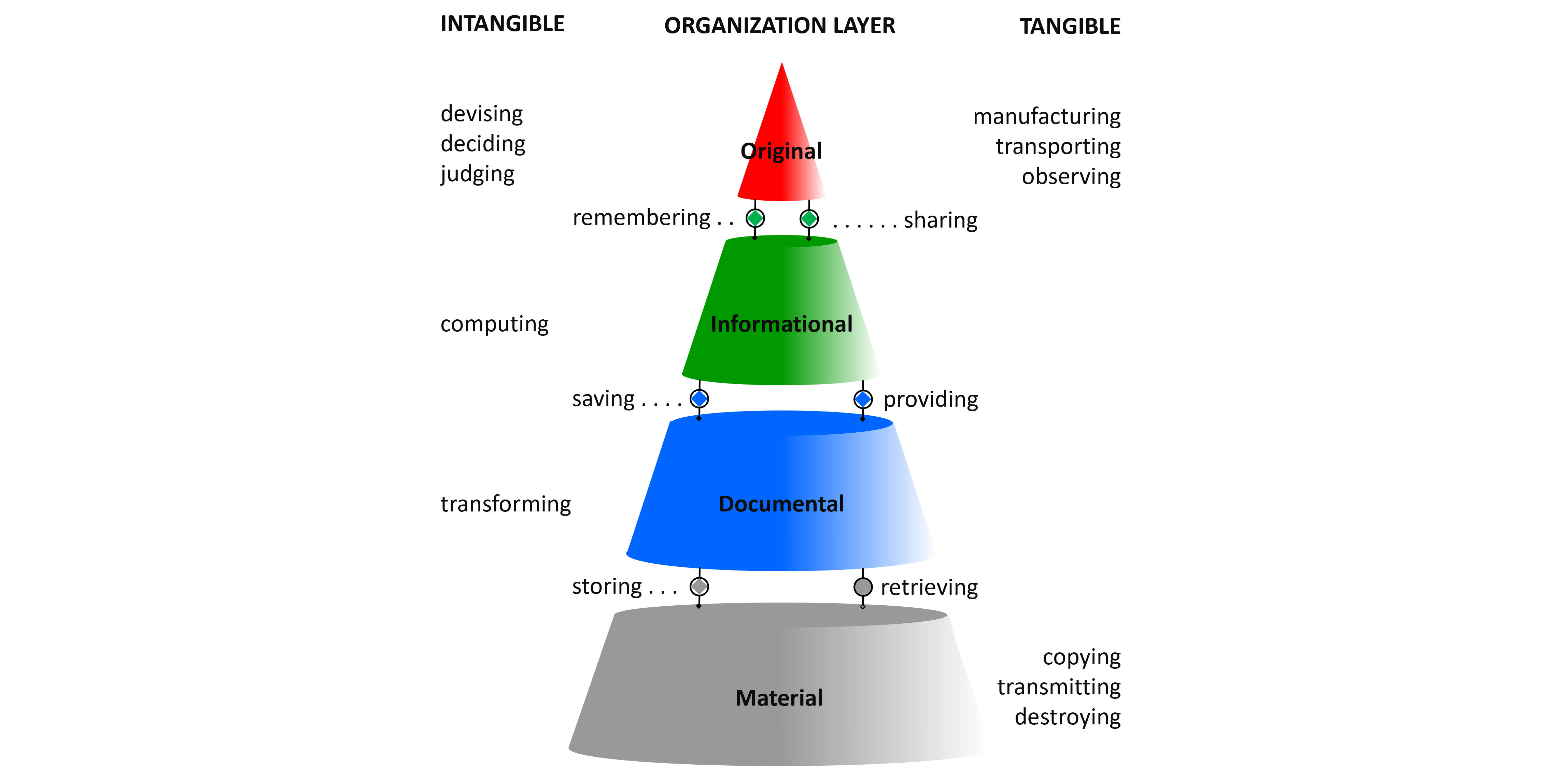Previously, I explained that the operation of an enterprise is comprised of two distinct kinds of activities: production and coordination. Production is making things while coordination refers to the conversation that regards the production. Production and coordination activities together is called a transaction, that follows a specific though generic pattern, including several kinds of exceptions. Transactions may be related through composition in order to build a network of related responsibilities. In this blog I will show that we can further distinguish between different sorts of transactions or production activities.
Four layers
According to Stamper [1], we can discern six levels that are important in social interaction, that we will group into four layers. The layering shows that a higher layer builds upon a lower one.

The most basic level concerns the physical substance that carries data. Examples include a piece of paper or the air (molecules). We will call this the material layer, that is about files.
The next levels concern both the empirics and syntax. Empirics is about the way to code or express something, e.g., in Roman letters, the Cyrillic alphabet, Morse code, or binary code (see Note A). Syntax concerns the structure or grammar of sentences, such as the English language and the Python programming language. We will refer to these levels as the documental layer, that is about data and documents.
The distinction between a file and document or data is important: every file is the carrier of a document or data, while every document may be inscribed in one or more files. If a document is inscribed into multiple files, we may call these copies. If all (physical) files for a document are destroyed, the document should be considered lost.
The next levels concerns semantics and pragmatics. Semantics is about the meaning of something, while pragmatics refers to the intention that may be present in a sentence. The sentence “The dishwasher has just finished (red: a cycle)” may only be informative about the current state of affairs. However, it may also contain the intention of one person requesting another person to empty the dishwasher. Together these levels are called the informational layer, that concerns existing facts.
The last level is about the social level and refers to the effect of communication. It is thus about shared understanding and commitments between people. This is also known as the original layer, that concerns new facts. Refering to the dishwasher example: only when the person to which the sentence was addressed hears and understands the intention – i.e., the request to empty the dishwasher – only then we can see the effect of communication in the social world: the request to commit to emptying the dishwasher (within a certain time frame), that should be answered with a promise or decline, following the generic transaction pattern.
Production sorts
According to the layers described above, we can discern different sorts of production activities.
A production act is called original when it creates new facts in the business. Examples include devising, designing, deciding and judging (intangible), and manufacturing and transporting (tangible).
Informational production acts are intangible by nature, as they are acts in the human mind of which the products are thoughts. Examples include the remembering, sharing and deriving (computing) of business facts.
A production act is called documental when it concerns the saving and providing of documents or data that contain original facts that need to be remembered. It also includes transforming documents or data, like from XML to JSON, or converting a document to PDF.
Material production acts concern the storing, retrieving, copying, transmitting, and destroying of the files that carry documents or data. The distinction between a file and document or data is important: every file is the carrier of a document or data, while every document may be inscribed in one or more files, which may be copies in different formats.

Benefits of organization layers
As can be seen in the picture above, the layering includes touch points or ‘interfaces’ between the organization layers. A lower layer, just as described by Stamper, supports a higher layer, and a higher layer needs the lower layer(s) to function properly. To a large extent, the lower layers are determined by the highest layer.
As human beings are the only ones to participate in social interaction, only human beings can create original facts. At the same time, the lower layers are more and more implemented by software. Thus, by focusing on (original) facts and transactions in the original layer, one gets a perspective on the decisions that need to be taken by human beings, while this at the same time can serve as a blueprint for ICT and automation.
Notes
A. Binary code is the most basic form of computer code, consisting of 0s (off) and 1s (on).

Comments (0)